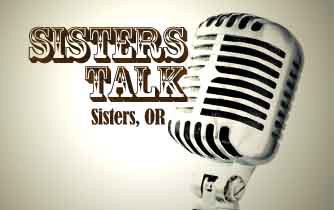

At 23, Cole met up with the other love in his life, a feisty 16-year-old named Charlotte. They married in 1942. Cole left farming and hauled milk for the Pet Milk Company during the early years of their marriage. Two daughters, Connie and Carolyn were born in 1943 and 1944.
In 1948, Cole lost his milk hauling route to the new tanker trucks which could haul milk more economically. That year, Charlotte and Cole traded their pickup for a family car, packed their two children and all their belongings into it and drove to Prineville, where his brother-in-law Floyd Williamson had lined up a job for Cole at the Evans Lumber Company (which eventually became Consolidated Pine).
The Still family's involvement with horses flourished with their move to Prineville. They joined the Prineville Ridge Riders in 1951, participating in trail rides, play days, and horse shows. Cole has been President of the club for all but two of the past 52 years.
Charlotte and Cole fondly remember the names of all their horses during the 1950's and 1960's, especially those that performed well in competition.”We had a mare named Ginger in the late 1950s that set play day records in the figure-eight event that still stand today. She also won Grand Champion - Showmanship at the Prineville Fair in both 1962 and 1963,” said Cole.
The couple started endurance riding and racing in 1973. One of their most memorable rides took place that year. They rode the Pacific Crest Trail from the Columbia River to the California Border in 17-1/2 days. No easy feat, considering no one had previously ridden it in less than 20 days.
Although Cole has won many endurance races, caring for his horse's health is more important to him than any award. “I've actually got more best-conditioned awards than first place's. It shows that I've had my horses in shape to compete,” said Cole.
July 28, 1988 was a day that Charlotte and Cole's endurance riding skills were put to the ultimate test. Bob Hathrill, a longtime friend from Prineville, joined them on a five-day pack trip along the Pacific Crest Trail from Mt. Hood to the Santiam Pass.
The fourth morning of the trip started perfectly, beautiful weather and wonderful views. However, just after leaving camp at Hunt's Lake near Mt. Jefferson, Bob heard an approaching roar overhead. “It's a plane and it's coming in low,” Bob hollered to Cole and Charlotte, following behind on the trail. Seconds later, two Air National Guard jets raced over the tree tops, spooking the horses and sending them running in all directions.
Charlotte screamed, “I can't hold Stormy!” as she raced down the trail past Cole and Bob. Cole gave chase, while trying to control his own horse, Wendy, and a pack horse. The pack horse broke away and raced off into the forest, leaving Cole trying to contain Wendy.
”I thought we were goners for sure,” said Cole.
With three of the four horses long gone, Bob had no choice but to stabilize the injured riders and ride for help. Many hours later, an Air Life helicopter lifted Charlotte and Cole out of the wilderness to safety. Charlotte spent seven months in a full body cast. Cole recovered more quickly, but his body still aches from all his injuries.
Their horses were all eventually recovered. Two years after the accident, the Air National Guard reached a settlement with Charlotte and Cole, never admitting any guilt for the accident.
Cole was 69 when the accident occurred. Not one to slow down, in 1994 at age 75, he won the Lily Glen 30-mile race on Knight, his jet black Arabian gelding. Cole regularly wins the twenty-five mile race at the Prineville Endurance Rides, a series of races on the National Grasslands behind Smith Rocks. Not only does he regularly win that race, he’s also the Ride Manager for the event, and has been since it's inception in 1972.
”I've tied many a ribbon on the trees in the Grasslands over the years,” said Cole.
Promoting endurance riding is clearly a labor of love for Cole Still. Since 1995 Cole has also been the Ride Manager for the Bandit Springs 30, 50, and 100-mile races east of Prineville. Cole clears trails and ties ribbons for weeks before an event. His attention to the environment and safety is appreciated by both riders and Forest Service personnel.
Cole and Charlotte were awarded the “Ambassador Award” by the Pacific Northwest Endurance Riding Conference (PNERC) for their promotion of endurance riding in 1995. They helped form the PNERC in 1972. Cole is also the oldest member of the organization, and certainly the most active in his age group.
April 28, 2002 proved to be another test of Cole’s endurance as a rider. Having just completed his turn at the poles and barrels during the Prineville Ridge Rider’s play day events, he backed his Arabian gelding Stormy up to the arena fence to watch the other contestants. For some unexplained medical reason Stormy just “melted” and fell over with Cole still in the saddle.
“One ole boy said he swore that Stormy was shot – he went down so hard,” said Cole.
Witnesses said that Stormy fell once, then tried to recover and fell again, both times with Cole stuck in the saddle. “It happened so fast I couldn’t get my foot out of the stirrup,” said Cole. Knocked unconscious, Cole suffered a broken foot, four cracked ribs, a cracked pelvis, and pulled muscles in his back.
A year later, at 83, Cole is riding again and managing endurance races around Prineville. He won’t compete in this May’s Prineville Endurance Races because his foot cannot take hard riding – yet.
But after 32 years of competitive endurance racing you can count on Cole racing again in the near future.






